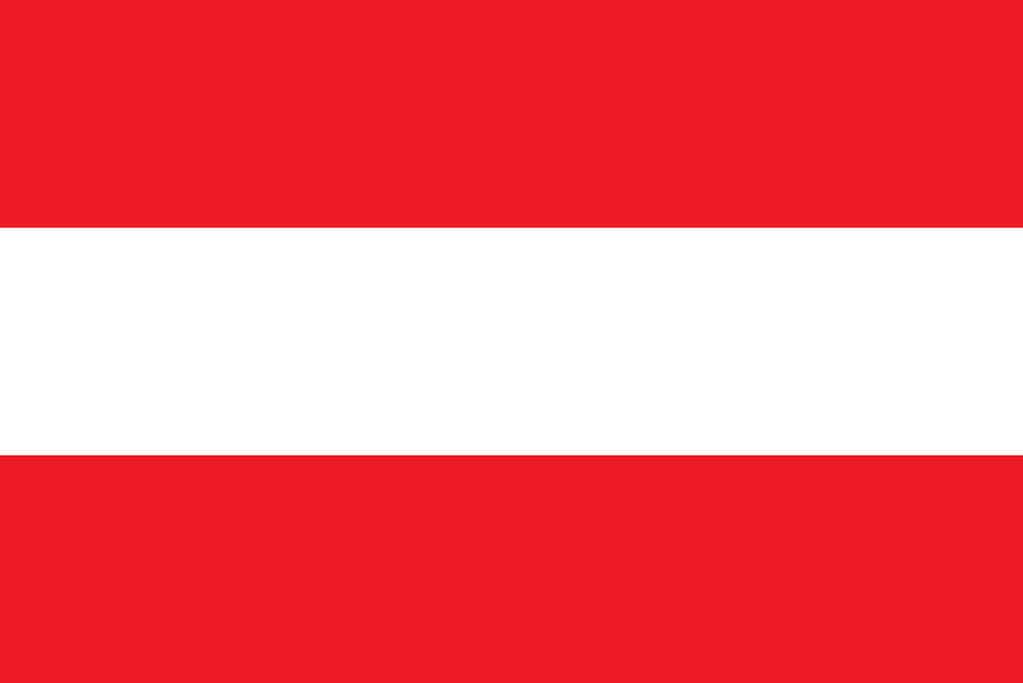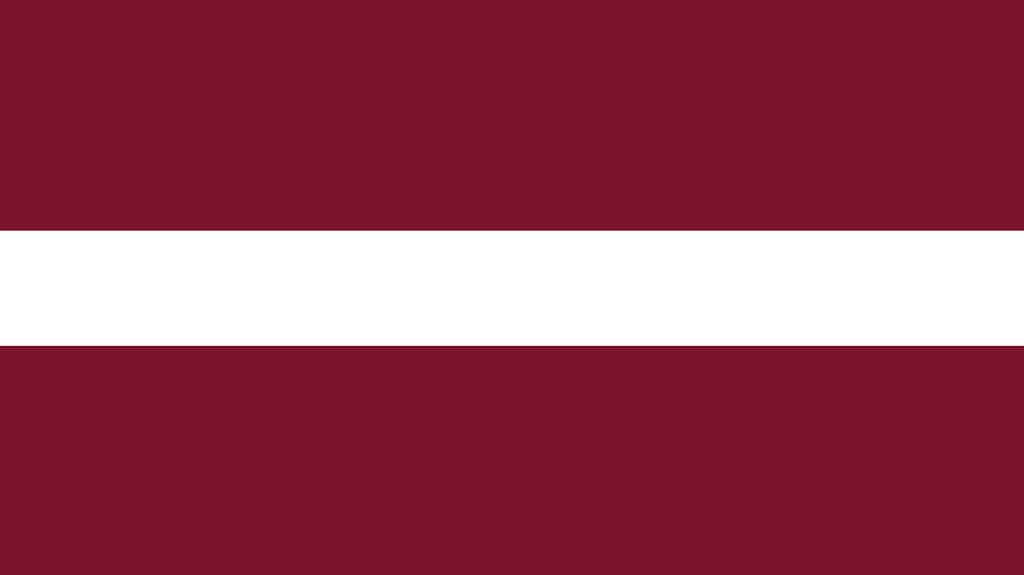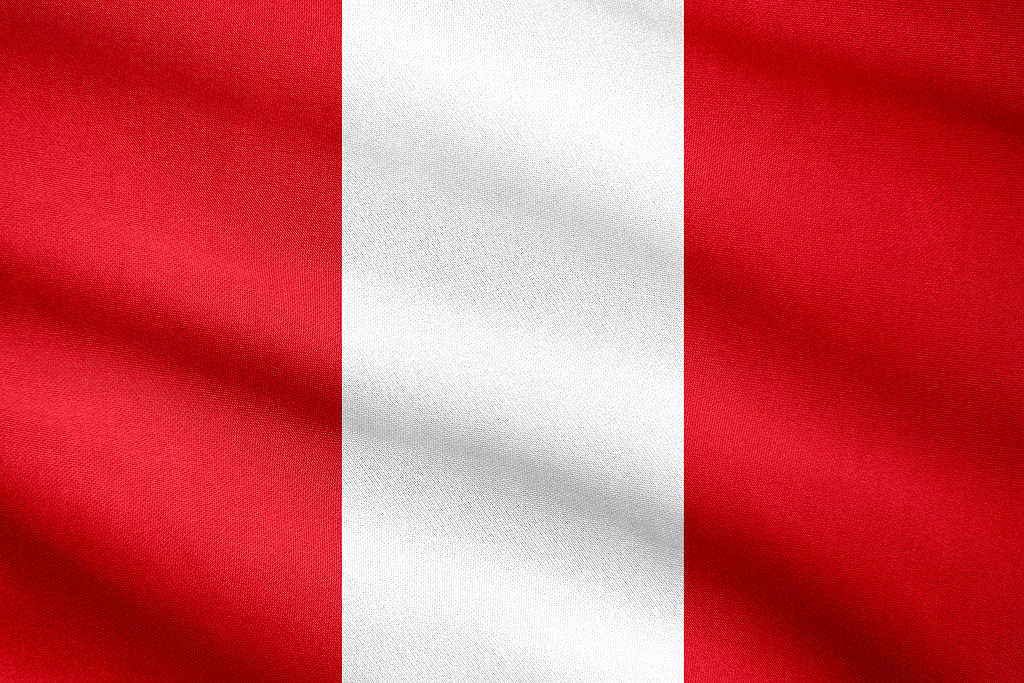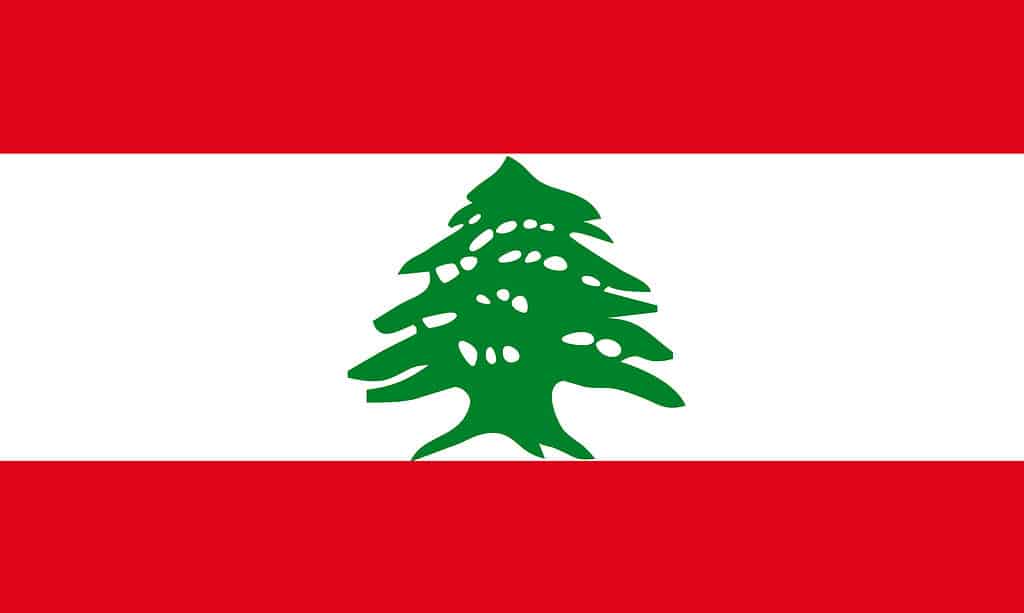National flags, pieces of cloth with distinctive designs that represent each country on Earth, are hoisted high atop flagpoles. Symbolically, a flag can stand in for a whole nation. These flags generally represent freedom and autonomy for their respective nation. They are typically multicolored and decorated with geometric motifs and symbols that have some significance to the country’s past or present. Various flags that have the colors red, white, and red are discussed in this article.

We’ll examine five nations whose flags have these colors, with red appearing first, white second, and red once more. These tricolor flags can be read from side to side or top to bottom. A brief history, description, and interpretation of each flag that meets these specifications will follow.
The Flag of Canada

The flag of Canada has a red field with a white square in the center, in which a stylized red, 11-pointed maple leaf is emblazoned in the middle.
©iStock.com/RM80
Canada’s flag displays the red and white colors that are the country’s official ones. The red, white, and red color scheme is based on the flag of Canada’s Royal Military College and the ribbon of the Canada General Service Medal. This is a British honor given to Canadian soldiers who fought for the country in the 19th century.
Design
There is a stylized red 11-pointed maple leaf in the center of a white center in the flag of Canada. The flag is red on both sides.
Symbolism
The color red is associated with success and optimism, while the color white is associated with objectivity, calm, and Canada’s “Great White North” appellation. One of Canada’s most recognizable symbols, the maple leaf can be seen on Canadian currency, government documents, emblems, buildings, and artworks all around the country. It represents valor, bravery, and loyalty.
The Flag of Austria

The Austrian flag consists of a horizontal triband of red (top and bottom) and white.
©iStock.com/VanReeel
The Austrian flag, having its roots in 1230, is one of the world’s oldest continuously flown national flags. A legendary Austrian ruler designed the flag by mistake during a deadly war. Legend has it that it was created when the duke’s white robes were covered in blood save for the part that was shielded by his belt. When he removed his belt, he noticed a crisscrossing pattern of red, white, and red running across his shirt. He decided to adopt it as his heraldic symbol since he found it so arresting.
Design
Austria’s national flag features three parallel red, white, and red bands.
Symbolism
Love, charity, violence, and domination are all symbolized by the color red on the Austrian flag. It’s also a symbol of strength and bravery. White, on the other hand, is a symbol of innocence and truth. The combination of red, white, and red is widely known as the official colors of Austria and the Habsburg dynasty.
The Flag of Latvia

The flag of Latvia consists of a carmine red field (background) divided horizontally by a narrow white stripe. The flag’s width-to-length ratio is 1 to 2.
©iStock.com/bndart
The Latvian flag was flown over an independent Latvia from 1918 until 1940, when the Soviet Union’s occupation of the country took place. Its use was strictly regulated during Soviet rule. On February 27, 1990, just days before the country regained its independence, the Latvian government formally re-adopted the classic red-white-red flag. The flag of Latvia has a lot of visual similarities to the flag of Austria. They have a shared aesthetic origin in the concept of battle-stained fabric.
Design
Although they look similar, the Latvian flag has a unique color palette that distinguishes it from the Austrian flag. The white band in the center of the Latvian flag has been made narrower, and the red bars have been made darker. The flag of Latvia is longer than that of Austria.
Symbolism
The white blanket in which a Latvian tribal leader was covered when he was killed is the inspiration for the country’s flag. The center of the sheet, where his body had been lying, was unblemished, but the outermost and innermost edges were covered in blood. This blanket served as a banner in the ensuing conflict.
The Flag of Peru

The current version of the national flag of Peru was adopted in 1950.
©MriMan/Shutterstock.com
There are three official flags in Peru: the state flag, the battle flag, and the flag of the Republic of Peru. Every one of them is divided into thirds vertically by a red, white, and red band. State and military flags both feature coats of arms in the white center, whereas the national flag’s center is left empty.
Design
Peru’s flag is a tricolor, with the two outer bands being red and the center band being white. Various emblems could be used to cover its original design depending on its intended use.
Symbolism
The white band represents justice and peace, while the crimson bands represent the people’s resolve and fight for independence.
The state emblem, comprised of a palm leaf and laurel wreath, is shown on the left and right sides of the flag, respectively. A white and crimson ribbon, whose pattern is reminiscent of the American flag, links all of these icons together. They represent the epitome of success and valor. The war flag, however, features four more Peruvian flags in addition to the shield.
The Flag of Lebanon

The flag of Lebanon consists of three horizontal bands of red, white, and red, with a green cedar tree in the center of the white band.
©iStock.com/flowgraph
The late Naoum Mokarzel, head of the Lebanese Renaissance Movement, created the flag of Lebanon during the country’s French Mandate. It resembled the French tricolor flag, but its middle was replaced by a green cedar (Lebanon Cedar).
Design
The flag of Lebanon consists of three horizontal bars of red, white, and red, and a green cedar tree in the middle.
Symbolism
Snow-covered Mount Lebanon served as inspiration for the white center with the cedar tree. Cedar trees are the dominant vegetation on the mountain. White also serves as a symbol of innocence and calmness. Because of its frequent mention in the Bible, the cedar tree has come to symbolize Christianity. The tree is also a symbol of joy, wealth, and immortality. The bloody crimson stripes represent the bravery of those who battled for freedom.
Click here to learn about every single flag in the world!
Summary Of 5 Countries With Red, White, And Red Flags
| Rank | Country |
|---|---|
| 1 | Flag of Canada |
| 2 | Flag of Austria |
| 3 | Flag of Latvia |
| 4 | Flag of Peru |
| 5 | Flag of Lebanon |
The photo featured at the top of this post is © iStock.com/husayno
Sources
- Soap Boxie, Available here: https://soapboxie.com/world-politics/Flags-That-Have-Red-White-Red-Motifs
- Wikipedia, Available here: https://en.wikipedia.org/wiki/Flag_of_Canada
- Wikipedia, Available here: https://en.wikipedia.org/wiki/Flag_of_Lebanon#History
Thank you for reading! Have some feedback for us? Contact the AZ Animals editorial team.






